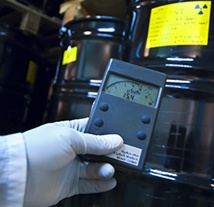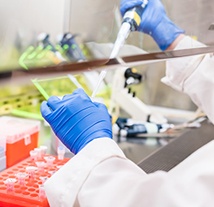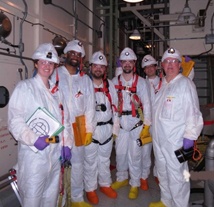By Sara Peters, Fauske & Associates, LLC (FAI)
"Safety culture" is a term that is frequently heard referenced around our engineering and testing lab Fauske & Associates, LLC (FAI) ─ both as it pertains to our customers and in our own daily business practices. But, recently it occurred to me that if one does not work in my business they might be asking ‘what exactly is a safety-first culture and how is it relevant?’
Safety Culture Defined
The International Nuclear Safety Advisory Group (INSAG) is credited with coining the term in their report on the Chernobyl incident published in 1986.1 INSAG defined it as “The assembly of characteristics and attitudes in organizations and individuals which establishes that, as an overriding priority, protection and safety issues receive the attention warranted by their significance.” 2
Since then, numerous other definitions of the term have emerged from various sources. A commonly cited one provided by the U.S. NRC (United States Nuclear Regulatory Commission) which defines it as, “The core values and behaviors resulting from a collective commitment by leaders and individuals to emphasize safety over competing goals to ensure protection of people and the environment.”3 Incidentally, this is the definition we apply to our business.
No surprise that these two are very similar, as are most that I looked at – largely dealing with the values, attitudes and behaviors that are used within an organization to establish safety as a priority in the workplace. And, although it has roots in the nuclear power industry, its relevance extends far beyond into any industry that wants to operate safely at high levels of performance. So, now that you have an idea of what it is, how do you apply a culture of safety to your business?
A Culture of Safety Applied
A culture of safety is an ideal that should be ingrained in the overall organizational culture and reinforced daily from the highest levels of the organization all the way through the ranks. It incorporates numerous traits including leadership safety values, problem identification and resolution and personal accountability to name a few.4 Our management has long held the belief that in order to be successful as a business, we must put safety first. It is also a point that the management and founders of our company continue to reiterate to employees and clients and colleagues.
In a recent article published in the Spring 2015 issue of our Process Safety News and as a blog on our website, FAI founders Dr. Hans Fauske and Dr. Robert Henry gave the following response when asked to talk about what they see as the biggest change for the near future of process safety based on what they have seen to date?:
Dr. Fauske:
“The biggest change that I would like to see is basically making process safety a number one priority, even before profit. That’s a tough one, but I think it’s needed. I talk to a lot of people, customers and so on, and they say, ‘you well know the upper management isn’t willing to spend the money, it’s too costly.’ But it really comes down to a culture of safety. You need to have a safety process in a company, and you need to practice it, not now and then, but all the time. And particularly it has to come from up above, the president, the chairman or whoever is the top guy. It’s very important. And, I think if you are going to improve the industry from a safety point of view that’s got to take place. And in some companies, that is the case. You may have a good company doing all the right things and you never really have a serious incident. But, if you have another company that has a big one, that affects everybody, and that’s important.”
Dr. Henry:
“I’m not quite sure where to even start on this but it is extremely important. I can’t tell you how many times in discussions of all these types of possible accident conditions that we have to take care of or to at least address or think through - that the subject has come up ‘well that’s never happened.’ And, a lot of people fall into the trap that if it hasn’t happened before then it isn’t going to happen.
Most of the time, we are dealing with things that are very low probability, but they still happen and, sometimes the consequences are considerable, just like Chernobyl. But the other side of the coin, if you’re going to have an environment of safety, when the problem is solved you say it’s solved. You don’t just continue to milk it and let it hang on because all you are doing is diffusing the focus on the real activities that are needed.”5
At FAI, we have seen first-hand the benefits of a strong safety first culture, operating on a motto of ‘safety is the priority, quality is the standard’. This dedication to safety has enabled us to establish a reputation of being a world leader in nuclear and chemical safety and to continue to count numerous industry-recognized experts as team members. A testament to this is that in the past 25 years we have had just 1 missed day(s) incident and have seen extensive business growth from a company with 2 business lines at the beginning to one now providing 14 business lines with offices and testing facilities spread across four buildings. Not to mention that our strong safety first culture has resulted in better quality products and service which has enabled us to consistently provide the excellent customer service our clients and partners have come to expect.
Are we perfect? No, we are always improving and growing. But, as a company dedicated to promoting safety in industry and process for our clients, we draw on our own dedication to safety to help our customers develop tools to cultivate an organizational culture that promotes a proactive attitude to safety first and foremost.
Need assistance understanding how you can build a better safety environment or culture? We can help. Contact us at info@fauske.com to learn more.
References:












